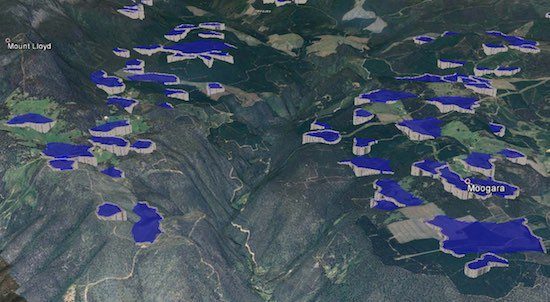A 100 per cent renewables electricity grid supported by pumped hydro energy storage would not only be cheaper than the current coal and gas-based system, but would use a fraction of the Australia’s precious water resource, a leading energy researcher has said.
In a speech delivered to the APVI Asia Pacific Solar Research Conference in Melbourne this week, ANU professor Andrew Blakers said that switching to a grid powered by mostly solar PV and wind, and balanced by pumped hydro would be a water saver, and not a water consumer.
This might seem obvious when it comes to solar PV and wind energy, but what about pumped hydro?
Blakers – who is Director of the ANU Centre for Sustainable Energy Systems, is known for his view that Australia can reach 100 per cent renewables by the early 2030s, closely followed by the rest of the world.
He is also vocal about the vital role that off-river pumped hydro would play in this scenario – which has been modeled by the ANU – as a cheap, abundant and ages old technology that could balance out a grid made up of 90 per cent solar PV and wind.
Off-river pumped hydro works by storing water in an upper reservoir and running it through a turbine to a lower reservoir when electricity is needed – such as when the sun is not shining or the wind is not blowing.
The water can then be pumped back uphill when electricity from renewables and other sources is abundant and cheaper.
ANU research also led by Blakers has mapped thousands of potential pumped hydro sites around the country, and hopes to identify hundreds more, as part of an ARENA funded study.
But what about the environmental impact of building 450GWh of new, off-river pumped hydro energy storage – the amount ANU modelling suggests would be needed to support the 100 per cent renewables transition?
“A lot of people ask about environmental impact,” Blakers told the conference on Thursday. “Well, it’s minimal.
“The amount of land that we need … for up to 100 per cent renewables is about 36 square kilometres. … That’s five parts per million of the Australian continent, and vastly smaller than the largest natural lake in Australia,” he said.
“The amount of water that we need is also trivial. When you look at the water requirements you could truck it in at full commercial rates and you would not notice it in the capital cost of the reservoir.
The use of evaporation suppressors, he said, could keep evaporation below rainfall in all places in Australia.
“Importantly,” Blakers added, “if we switch to a 100 per cent renewable system supported by pumped hydro, the amount of water (used) goes down by more than a factor of four, because you get rid of the cooling towers from the coal and gas power stations.
“So going to renewables, is a water saver not a water consumer.”








